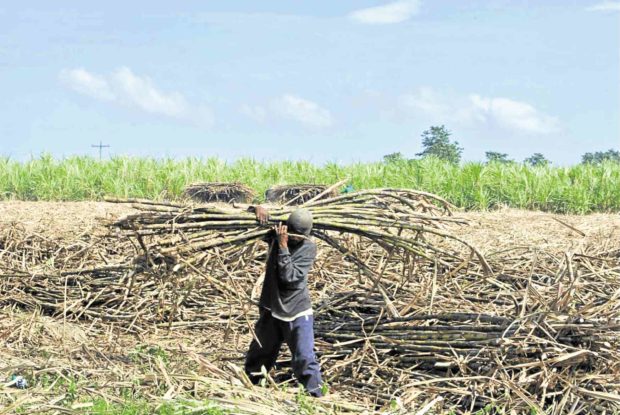
Sugarcane is turned into bioethanol at a plant in San Mariano town, Isabela province. Residents, however, are opposing the processing plant’s operation due to concerns about pollution. —JUN BANDAYREL
SAN MARIANO, Isabela — A bioethanol processing plant covered by a 2016 cease-and-desist order from the Environmental Management Bureau (EMB) has again been directed to stop processing sugarcane and its derivatives after communities reported bad smell coming from its premises.
In a meeting on Feb. 23, Nelson Honrado, EMB director in Isabela province, reminded Green Future Innovations Inc. (GFII) that its processing plant at Barangay Mallabo here must not be reactivated since the stop order had not been lifted.
Permit revoked
The plant’s environmental permit to operate had been revoked by the EMB and the Pollution Adjudication Board for failing emission and effluent standards two years ago.
Environment Secretary Roy Cimatu ordered a new investigation after Malacañang received complaints about a noxious stench that had affected residents.
Romy Ecraela, GFII pollution control officer, told Honrado that the plant would abide by environment rules. He also said the plant had undertaken safety measures but he did not elaborate.
Residents vented their ire online.
The stench was unbearable during the early hours of the morning, according to a post by Philip Julian Moris, while a Mallabo resident, Vherilyn Aggari, said her son had suffered asthma attacks due to the effluents and from smoke billowing from the plant.
The EMB environmental permit for processing and the distribution of ethanol and for energy distribution allowed GFII to release effluents into waterways provided that their content and quality “shall not exceed standard limits.”
Power generation
Developed in 2013 as a large-scale bioethanol and cogeneration plant in this town, GFII is now managed by the Central Azucarera de Tarlac in a tie-up with Filipino, Japanese and Taiwanese investors.
The plant produces up to 200,000 liters a day, or 54 million liters of anhydrous alcohol annually, according to the GFII website. Its cogeneration plant, which converts excess bagasse to energy, generates 19 megawatts of renewable power. —Villamor Visayas Jr.